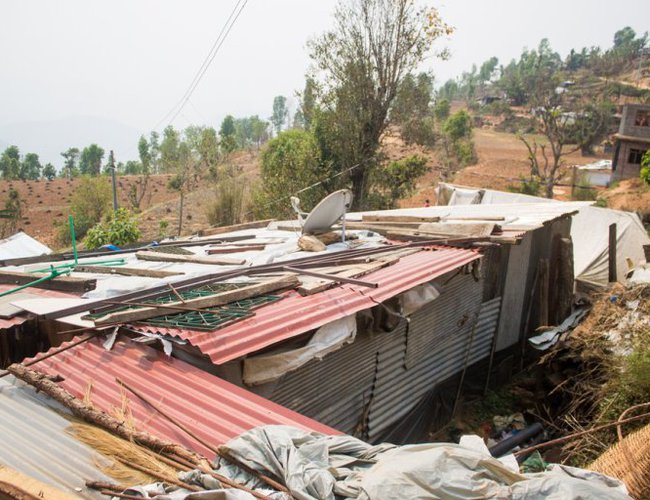
Shelter and Reconstruction in Post-Earthquake Nepal Preliminary findings from IRM survey research conducted in April 2017 reveals that many people are yet to move back into their houses.
“Two years on from Nepal’s Great Earthquakes, 23% percent of the populations in the surveyed districts are still living in self constructed temporary shelters. In the most affected districts (those categorized as severely hit in the government’s Post Disaster Needs Assessment), 62% are still in temporary shelters,” said the report.
Funds to support IRM are provided by the UK Department for International Development and the Swiss Development Cooperation, the analysis and survey was done by the Asia Foundation and Interdisciplinary Analysts.
“The IRM project tracks evolving earthquake impacts, the effectiveness of aid delivery, and the recovery and reconstruction process through a quantitative survey of nearly 5000 respondents randomly selected across 11 districts of varying earthquake impact levels as well as in-depth qualitative field monitoring in six of these districts,” states The Asian Foundation.
The first round of field data collection was completed two months after the first major quake, in June 2015. The second round of research was conducted in February and March 2016, the third round in September 2016, and the fourth round in April 2017. The IRM research is longitudinal and as such, the reports are comparative and reflect on changes since the first round of data collection.
The figure is highest in Sindhulpalchowk district, where 84% remain in shelters. IRM qualitative research found that many people in shelters continue to struggle with shelters not suited to hot or cold weather, too small for families to live in, and people suffering from smoke from cooking areas situated in the same areas where they sleep.
Seventeen percent of people in shelters said they got sick during the winter due to problems with their accommodation. This note highlights early findings related to shelter and reconstruction from the fourth round of quantitative survey research for The Asia Foundation’s Independent Impacts and Recovery Monitoring Project (IRM).
The survey work was implemented by Interdisciplinary Analysts. IRM is a mixed methods and longitudinal study tracking earthquake impacts and recovery over a period of two years (June 2015-April 2017).
The IRM surveys generate data from a sample of 4,854 households across 11 earthquake affected districts. The first round of the survey was conducted in June 2015, the second in February-March 2016, the third in September 2016, with the fourth round implemented in April 2017. Data are weighted to ensure findings are representative.
Proportion of people living in temporary shelters include 84 percent in Sindhulpalchowk ,66 percent in Dhading, 63 percent in Nuwakot, 55 percent in Ramechhap, 55 percent in Gorkha, 44 percent in Okhaldhunga, 22 percent Bhaktapur,13 percent in Solukhumbu, 5 percent in Kathmandu, 2 percent in Syangja and 1 percent in Lamjung.
Previous IRM qualitative and quantitative reports
and briefing notes can be found at http://asiafoundation.org/tag/independentimpacts-and-recovery-monitoring-nepal/
- TANAHU HYDROPOWER PROEJCT: A Significant Achievement
- Apr 15, 2024
- AMBASSADOR HANAN GODAR: Sharing Pain With A Nepali Family
- Mar 30, 2024
- VISIT OF KfW AND EIB TO NEPAL : Mission Matters
- Mar 25, 2024
- NEPAL BRITAIN SOCIETY: Pratima Pande's Leadership
- Mar 24, 2024
- NEPAL ARMY DAY: Time To Recall Glory
- Mar 15, 2024
















